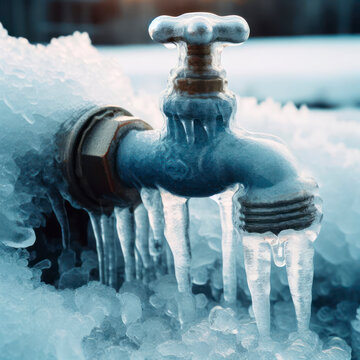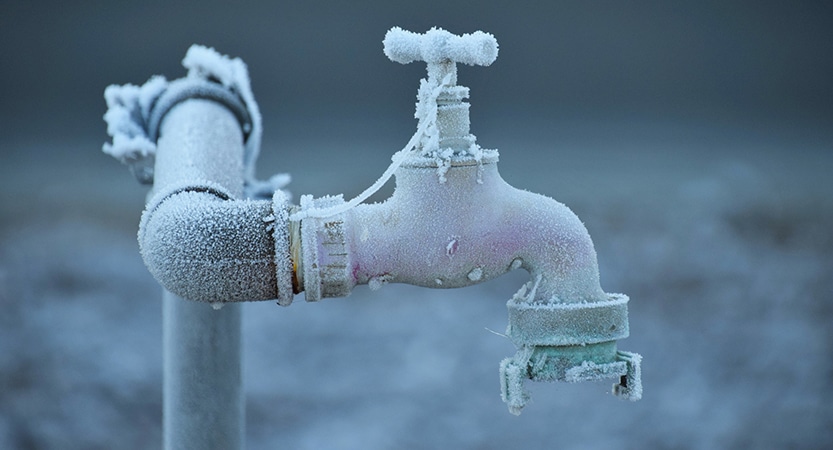How do you feel in relation to Prevent Frozen Pipes ?

Cold weather can ruin your plumbing, specifically by freezing pipelines. Here's how to avoid it from occurring and what to do if it does.
Introduction
As temperatures drop, the danger of frozen pipes rises, possibly bring about pricey repair services and water damage. Recognizing just how to avoid frozen pipelines is essential for house owners in chilly climates.
Comprehending Frozen Pipes
What creates pipes to freeze?
Pipelines ice up when revealed to temperature levels below 32 ° F (0 ° C) for extended durations. As water inside the pipelines ices up, it increases, taxing the pipe wall surfaces and possibly triggering them to break.
Risks and damages
Frozen pipes can result in water supply interruptions, property damages, and costly repair work. Ruptured pipelines can flood homes and cause comprehensive architectural damages.
Indicators of Frozen Piping
Determining frozen pipes early can stop them from bursting.
Exactly how to recognize frozen pipes
Look for decreased water flow from faucets, uncommon odors or noises from pipes, and noticeable frost on exposed pipes.
Prevention Tips
Protecting susceptible pipelines
Cover pipelines in insulation sleeves or utilize warm tape to secure them from freezing temperature levels. Focus on pipelines in unheated or exterior locations of the home.
Home heating methods
Keep indoor spaces sufficiently warmed, specifically areas with pipes. Open up cupboard doors to permit cozy air to circulate around pipes under sinks.
Safeguarding Outdoor Plumbing
Yard hoses and outdoor taps
Detach and drain pipes yard hoses before winter season. Install frost-proof faucets or cover exterior taps with protected caps.
What to Do If Your Pipelines Freeze
Immediate activities to take
If you suspect frozen pipes, keep taps available to eliminate stress as the ice thaws. Utilize a hairdryer or towels taken in warm water to thaw pipelines slowly.
Long-Term Solutions
Structural adjustments
Consider rerouting pipes away from outside walls or unheated areas. Include additional insulation to attics, basements, and crawl spaces.
Upgrading insulation
Purchase top notch insulation for pipes, attics, and walls. Correct insulation assists preserve regular temperature levels and minimizes the threat of frozen pipes.
Conclusion
Avoiding frozen pipelines calls for proactive measures and fast responses. By understanding the reasons, indications, and preventive measures, property owners can protect their plumbing during winter.
5 Ways to Prevent Frozen Pipes
Drain Outdoor Faucets and Disconnect Hoses
First, close the shut-off valve that controls the flow of water in the pipe to your outdoor faucet. Then, head outside to disconnect and drain your hose and open the outdoor faucet to allow the water to completely drain out of the line. Turn off the faucet when done. Finally, head back to the shut-off valve and drain the remaining water inside the pipe into a bucket or container. Additionally, if you have a home irrigation system, you should consider hiring an expert to clear the system of water each year.
Insulate Pipes
One of the best and most cost-effective methods for preventing frozen water pipes is to wrap your pipes with insulation. This is especially important for areas in your home that aren’t exposed to heat, such as an attic. We suggest using foam sleeves, which can typically be found at your local hardware store.
Keep Heat Running at 65
Your pipes are located inside your walls, and the temperature there is much colder than the rest of the house. To prevent your pipes from freezing, The Insurance Information Institute suggests that you keep your home heated to at least 65 degrees, even when traveling. You may want to invest in smart devices that can keep an eye on the temperature in your home while you’re away.
Leave Water Dripping
Moving water — even a small trickle — can prevent ice from forming inside your pipes. When freezing temps are imminent, start a drip of water from all faucets that serve exposed pipes. Leaving a few faucets running will also help relieve pressure inside the pipes and help prevent a rupture if the water inside freezes.
Open Cupboard Doors
Warm your kitchen and bathroom pipes by opening cupboards and vanities. You should also leave your interior doors ajar to help warm air circulate evenly throughout your home.

Do you really like more info about Prevent Frozen Pipes ? Post a remark down below. We'd be pleased to see your suggestions about this piece. We hope that you come back again before long. Remember to set aside a second to distribute this page if you enjoyed it. Thanks a lot for being here. Revisit us soon.
Call Today